Six months ago, the airline industry was facing a bumper year. While a small number of airlines were struggling, it seemed that most would do well. Take away most of the global passengers because of COVID19, and we have already seen some airlines collapse and we face losing more airlines. Governments have taken very different approaches to their airlines with some offering cash injections or loans with a variety of conditions, some offering nothing and some wanting to nationalise.
Company by company, this is what is happening across the globe:
Aegean- March 26, Aegean Airlines temporarily suspended all but one route of its international network. Olympic Air, Aegean’s subsidiary continued to serve all domestic destinations for the time with reduced flight frequencies. The carrier has expanded freight operations.
Aer Lingus- is forecasting that its business until August will be reduced by 90% and is investigating significant cost reductions including sacking 20% of its workforce losing 900 jobs. There have been calls for Aer Lingus to be re-nationalised by the Irish government.
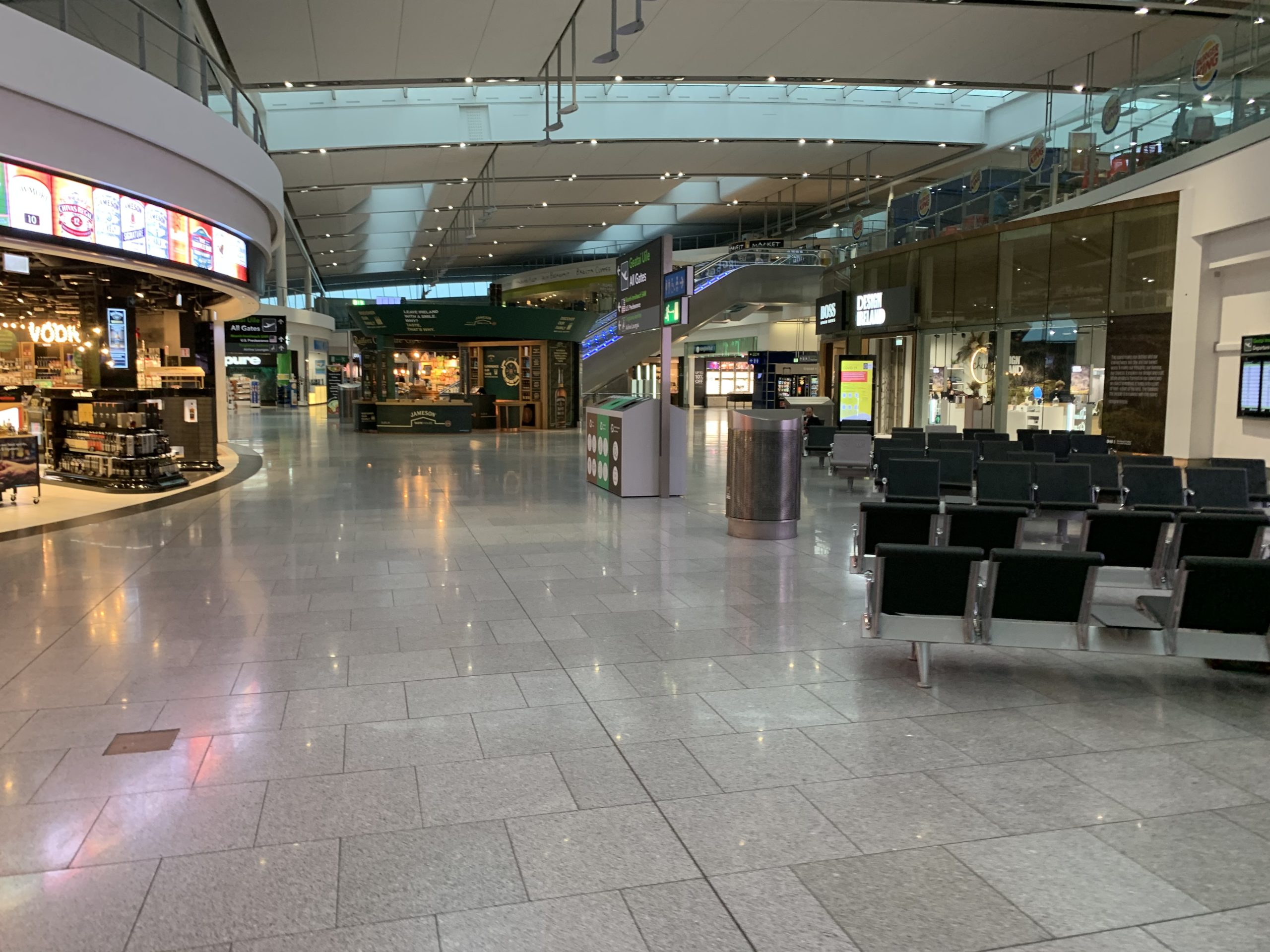
Dublin airport 16th March , 2020
Aeroflot is offering passengers three-year vouchers in place of refunds. They are also offering a discount on rebookings. Russia’s mandatory isolation period to May 15th means only a few essential domestic flights are flying. The sale of international flights is blocked by the Russian government until August 1st, 2020. The company is flying some repatriation and international cargo services. The Russian Federation owns 51% of the company, so government support is highly likely.
Aerolíneas Argentinas – flying only repatriation and freight flights as the government has banned all commercial flights from 20 March 2020 until 1st September. IATA have urged the government against this September date. Aerolineas is government owned and will be bailed out (again) by the Argentinian state.
Aeromexico – resuming some international flights on 1st May to Asia, Europe, the United States, Canada and other Latin American countries. The carrier grounded over half of its fleet with the remainder focused on cargo flights. The Mexican government has stated that the government will not bail any airlines out. Aeromexico has slashed costs including employee salaries. It should make it through but it will be a close call.
Air Asia – 96 per cent of its planes were grounded. It has now resumed domestic flights in Malaysia this week and hopes to start again in Indonesia, the Philippines and Thailand through May. It has cut employee salaries and reduced other costs by 30% and stopped taking deliveries of new Airbus planes. After a decade of expansion, AirAsia expects to end the year with one less plane in its fleet. The company is looking at options for its long-haul unit AirAsia X including adding a new investor or integrating AirAsia X into the parent group or shutting it down. Thai Air Asia has sought financial assistance from the Thai and Malaysian governments. The Malaysian government has also been considering a merger between Malaysia Airlines, Air Asia and Air Asia X.
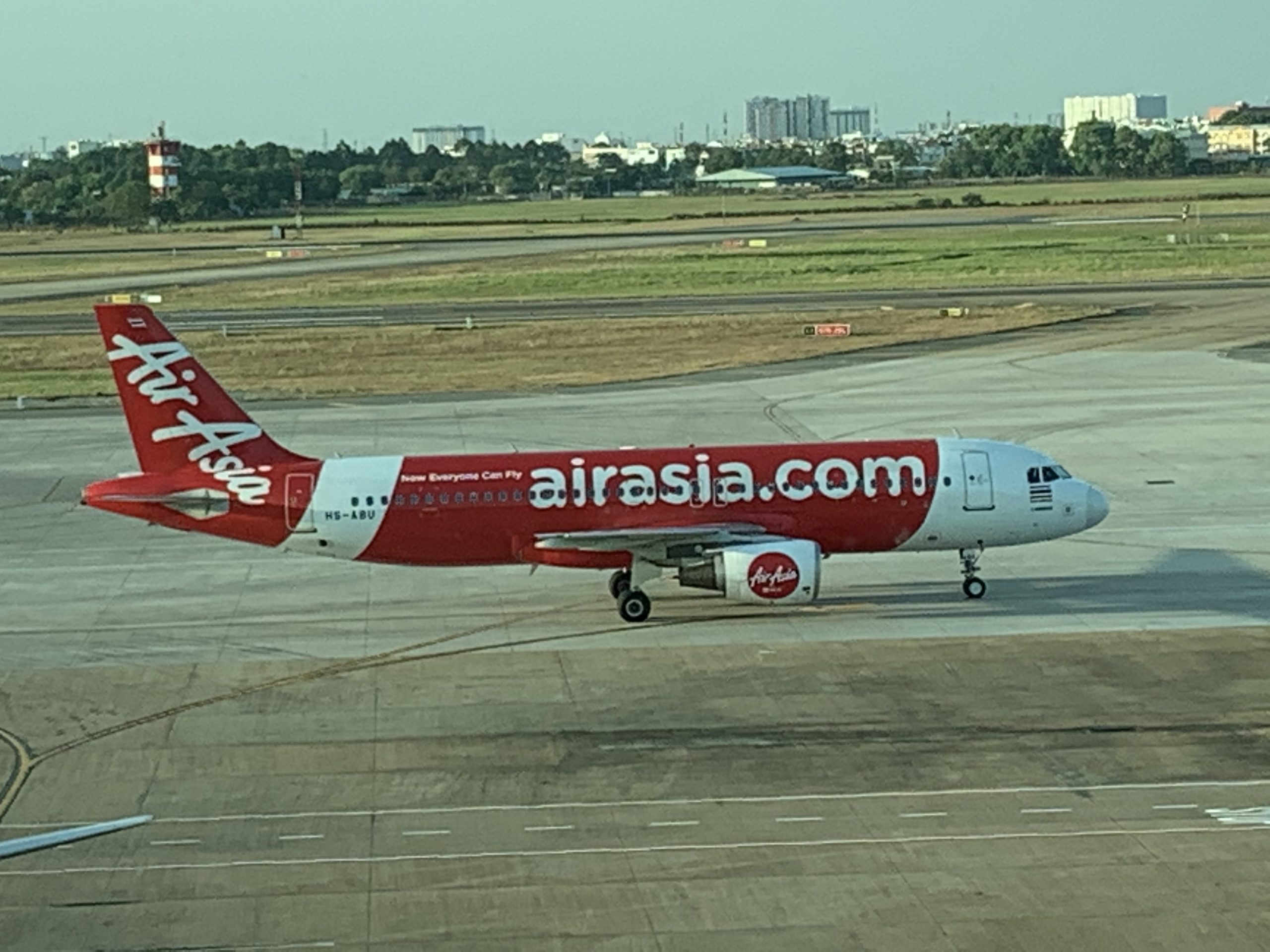
airBaltic – all flights suspended from 17 March with no re-start date. CEO Martin Gauss advised that the airline will stop using 737s and Q400s when it restarts. The airline will re-start with just fiveA220s aircraft and then add A220per week as demand builds. With 22 A220s in their fleet, this would take about four and a half months airBaltic are renegotiating the delivery timetable of 80 more A220s
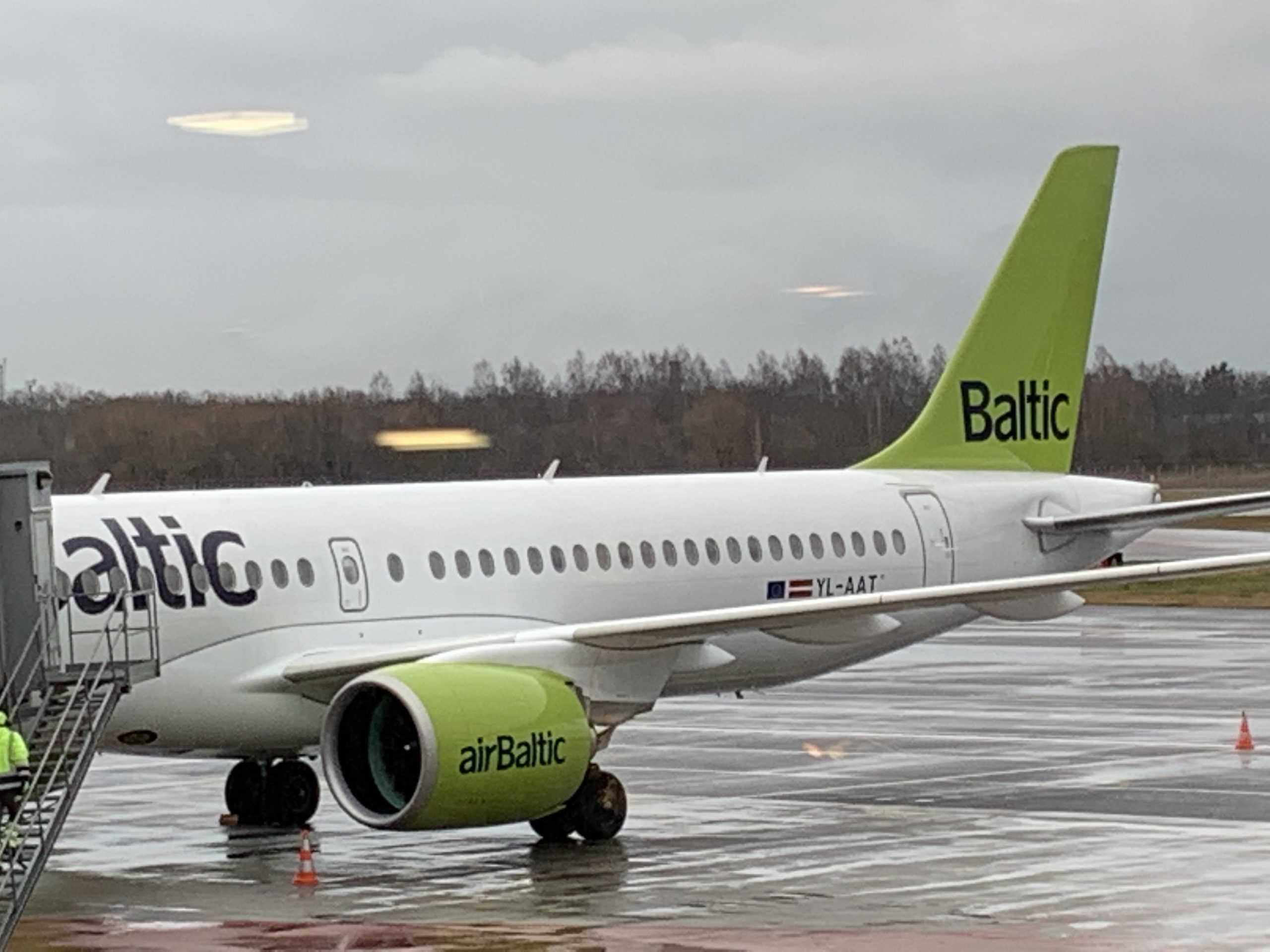
AirBaltic 220 at Tallin airport in December 2019
Air Canada – reduced schedule by 90 per cent, largely domestic. They have now suspended flights to 11 US cities until June. 16,500 staff laid off have now been reinstated under a Canadian government wage subsidy.
Air China- saw domestic and international traffic plummet in February and March and rebound in April since the lifting of restrictions. The Chinese Government is subsidising the price of its jet fuel by almost 50%
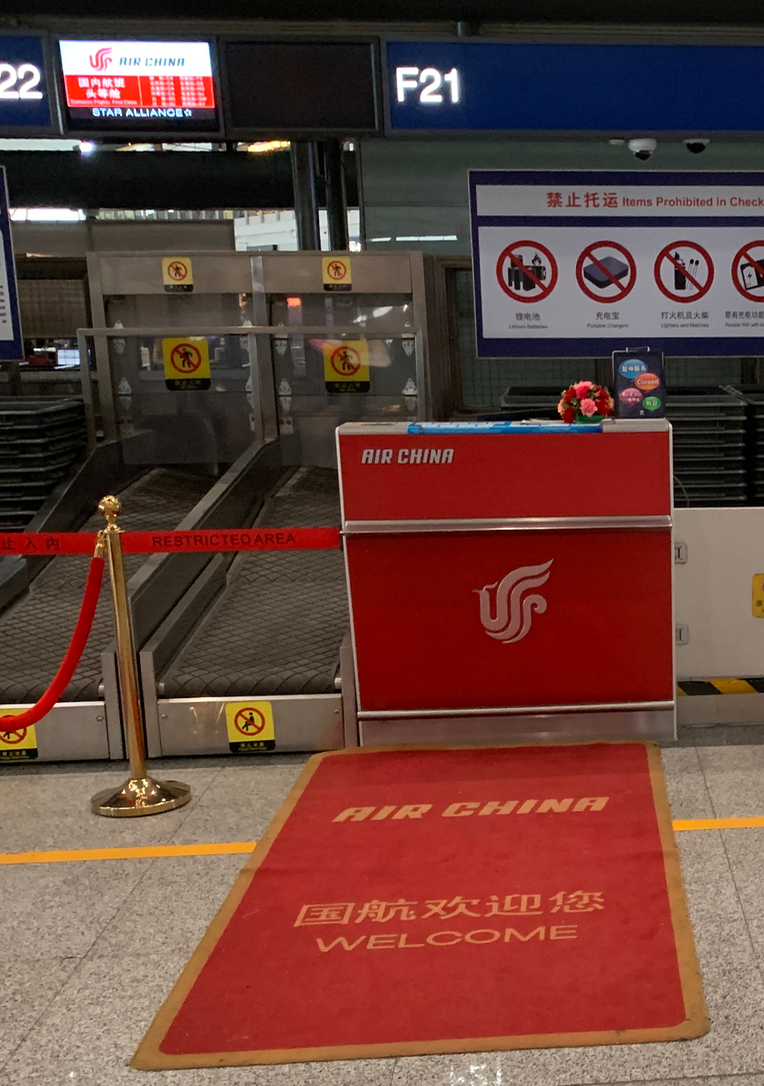
Air China at Beijing Airport
Air Europa – IAG has asked for a lower price for its takeover of Air Europa. Some Mallorca staff have used their downtime to make a fun video of the crew dancing and singing and trying to push a plane off its blocks:
Air France-KLM- has over 200 aircraft parked at gates and on a runway at Schipol airport, arranged according to size and type and another 180 placed in storage at Paris-Charles de Gaulle, Paris-Orly and Toulouse Blagnac. A small number of planes are operating some essential European services, freight only flights and repatriation flights. The group are receiving up to $US12 billion from the French and Dutch governments. They won’t be allowed to pay dividends and staff will have to take a pay cut. Air France will have to slash its CO2 emissions in half in from its 2005 carbon emissions by 2030. Also, emissions from French domestic flights will need to be cut by 50% by 2024. I suspect this means Air France will dump most of its remaining French domestic services.
Air India- India suspended air services from March 25 except for several relief and evacuation flights worldwide. The airline will possibly commence 25 to 30 % of operations post-lockdown in mid-May. Indian Government has extended the deadline to bid for Air India by 2 months till June 30.
Air Italy – bankrupt
Air Mauritius – in voluntary administration with future options being considered
Air New Zealand – is currently operating a limited network until 30 June for essential travel and cargo movement -total capacity down 95 percent. Demand will be reviewed on a route-by-route basis before services are resumed. The NZ government have offerred to lend the airline up to $NZ900m for two years at a hefty interest rate of between 7 and 8% interest on the first $NZ600m it borrows and if the airline needs the next $300m it will have to pay 9% interest on that. These rates will increase by 1% if Air NZ needs any of the money for more than a year. The loan has been structured as a “convertible loan” which means the Government will be entitled to convert the debt into shares in the airline if Air NZ is unable to pay the money back. This could mean the airline returns to government hands.
Alaska Airlines (and Horizon Air) – cut 80% of passenger capacity in April and May. They will receive $US992 million from the US payroll support program, with $US267 million of that sum as a loan. US Treasury will have the right to buy non-voting shares of Alaska Air Group. Face masks will soon be mandatory for all passengers and flight crews on Alaska Airlines planes from 11 May.
Alitalia- Italy plans to re-nationalise with a 100% equity stake and a EUR700 million cash injection
All Nippon Airlines- will delay delivery of aircraft and engage in aggressive cost-cutting measures supplemented by relief funds and employee furloughs. They expect a complete recovery in air travel in fiscal 2021.
American Airlines is probably the most financially precarious of the US carriers. It will receive $US4.1 billion aid from the US government and a $US1.7 billion ten-year unsecured loan. It has also applied for a separate $US4.75 billion, five-year secured loan. With significant debt already, I hold concerns for the future of the airline. While, I think they will make it through but it could be touch and go.
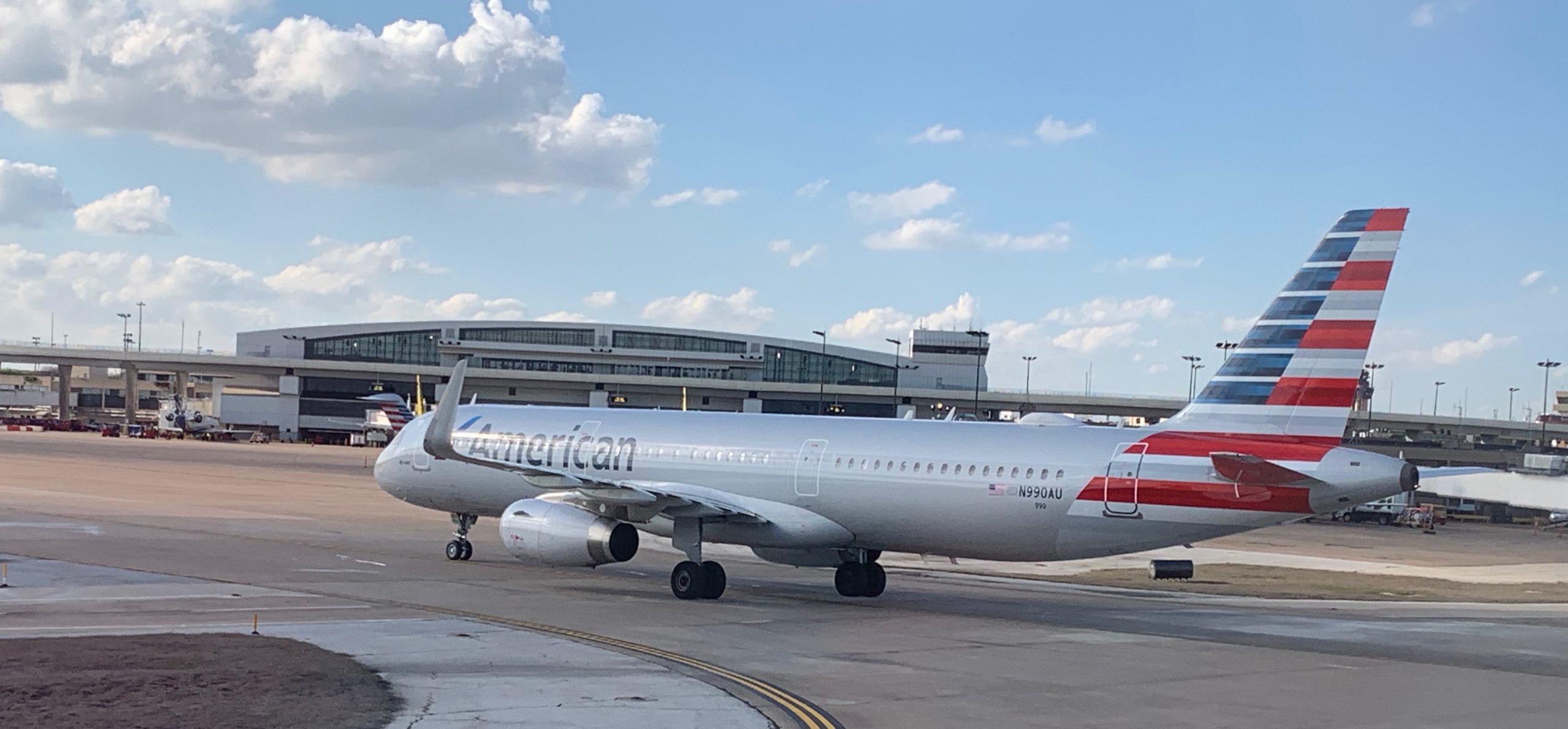
AA at Dallas in March 2020
Asiana Airlines – has asked staff to take 15 days of unpaid leave every month, reduced 80 percent of domestic routes and suspended most of international routes. State-backed banks in South Korea will extend a loan to the airline. The company’s takeover timeline by DC Hyundai Development Company has been postponed.
Austrian Airlines -ceased all regular flight operations on March 18 with no return date. Executive Board member Andreas Otto stated: “We have to assume that we will reach the ‘pre-corona level’ again in 2023 at the earliest.” Airline will retire 28 of their 80 aircraft by 2022 and add some A320s. The long haul fleet will be dramatically cut which suggests that they will drop most of their long haul routes with owner Lufthansa picking them up.
Avianca – grounded entire commercial fleet, and only operates some cargo flights in its three key markets: Colombia, Peru, and El Salvador. It cannot survive in its current form, needing an investment of about $US1 billion to survive so have gone into administration. They’ve said they are willing to make the Colombian Government a shareholder which means they would trim their international presence and return its focus to the Colombian domestic market. 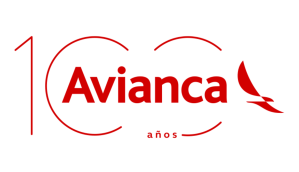
Bangkok Airways– already struggling, has suspended operations until June 1, cut salaries and put staff on unpaid leave. They have applied for a low interest loan from the government. The company plans to start flights with 70-seat ATR72s rather than the 180-seat Airbus 320s and will comply with Thai government rules that will require empty seats in each row of the cabin, no food or drink and compulsory face masks throughout the journey.
British Airways -owner IAG Group (which also owns Iberia, Aer Lingus, Vueling & Level) will make up to 12,000 employees redundant including one quarter of BA’s pilots. The job cuts have been accompanied by IAG cancelling its dividend, extending its credit facilities and using British government furlough schemes to pay salaries.
Brussels Airlines-suspended all regularly scheduled flights on March 21. The airline does not plan a return before June 1. They are currently in talks with the Belgian government over state support for the airline, which says it has only enough resources to last until the end of May. It is reported to be asking for €290 million. Owner Lufthansa does not have the funds and has promised the Belgian Government that any state aid would be used by Brussels Airlines alone and not go into Lufthansa group funds. Personally, I think the Belgian government should take the opportunity to re-nationalise the airline and give us back Sabena again.
Cathay Pacific and Cathay Dragon– cut 97% of its flying capacity. They now intend to increase their flying capacity from three per cent to five percent from 21June subject to government approval. Cathay Pacific closed its bases in New York, San Francisco and Los Angeles.
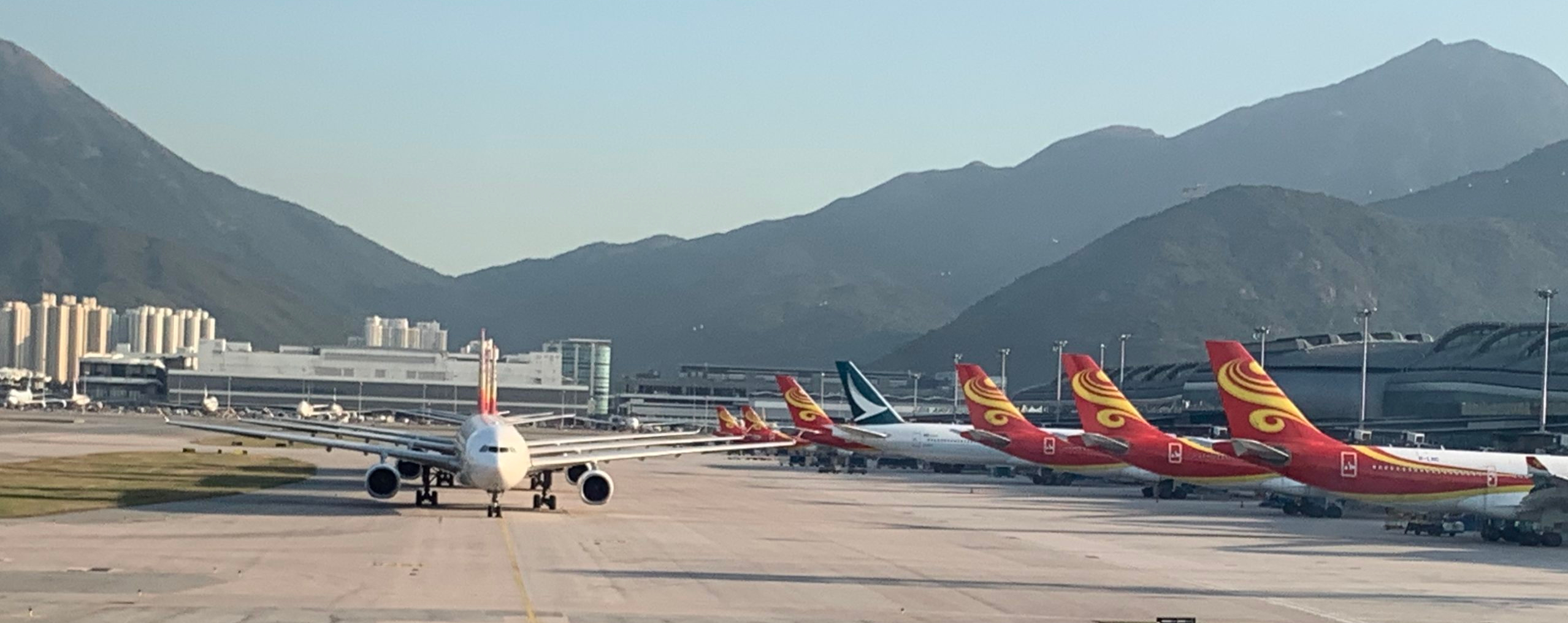
Cathay planes parked at HK International Airport in February
China Eastern- has slowly rolled out an increased its domestic capacity following the limiting of Chinese restrictions. Capacity is at 50% of the previous year. International capacity remains limited.
China Southern- has fared the worst in terms of revenue and profits of the big three Chinese carriers. Domestic demand has had some recovery but international passenger traffic is non-existent. The Chinese government provides direct financial incentives to airlines. China Southern are the only airlines in the world currently operating A380s.
COPA- currently only operating repatriation and cargo flights. The Panamanian airline expects to start operating 12 % of its normal scheduled flights in June. It has warned it is facing a possible liquidity crunch.
Delta – providing a reduced US domestic service and some flights to Canada, Caribbean, Central America and Japan. Cut operating costs significantly and US government has provided $5.4 billion in bailout funds and is considering a $US 4.6 billion loan.
EasyJet- has grounded its planes with flights not being considered before the end of May. They would re start with around 14 days notice. They have secured a £600 million loan from U.K. Treasury
Egyptair – all regular flights ceased
Emirates -regular passenger service shutdown although it is maintaining some cargo services with 777 freighters and providing some passenger services for foreign residents in the UAE to return home. Dubai’s has committed its full support” to the airline.

Etihad – Currently 80 per cent of its passenger fleet is on the ground with just 22 Boeing 787 and 777s and five 777-200F freighters operating cargo and repatriation flights. Etihad is aiming to start re-opening its passenger network in mid June. The company was already in significant financial trouble.
Ethiopian Airlines-cancelled flights to 87 destinations, grounded 80 planes and has furloughed thousands of workers for at least three months with no pay. Freight services have been expanded. The airline has approached its government for aid at a time when the country is not in a position to help.
EVA Air -The Taiwanese government has offered financial aid in the form of subsidies. Some of these can be backdated to 15 January. Sadly, their distinctive seven Hello Kitty jets are currently not flying.
Fiji Airways – has been operating freight and repatriation flights only but will resume limited domestic services from 4th May, as inter-island travel restrictions are lifted. They have planes parked at Alice Springs airport in the middle of Australia to protect them from humidity and cyclones.
Finnair – have cut 95% of their services and losing around two million euros per day. It has cut costs by 80% through temporary staff layoffs for all Finnair employees, sales and marketing cuts and Management salaries. The company plans to raise 500 million euros ($543 million) through a rights offering. The Finnish government which owns 55.8% has agreed to help cover the rights offering. Finnair has been processing 100,000 refunds.Finnish healthcare companies Mehiläinen and Attendo have offered jobs to Finnair employees during the temporary layoffs. The Finnair Singers performing the song “We’ll meet again”:
Flybe -Europe’s biggest regional airline has permanently closed.
Frontier Airlines -the second airline to mandate masks with flight attendants wearing protective facial equipment. Every second row on planes is being left empty. They will be receiving support from the US government’s wage support program.
Garuda Indonesia- International and domestic air travel halted until 1st of June. Indonesia’s Ministry of Transportation on Thursday said it would roll out financial relief measures
Germanwings – flight operations have been permanently discontinued. Lufthansa’s other subsidiaries will pick up the roots.
Gulf Air- after suspending services, they resumed travel in early April, although entry into Bahrain itself remains restricted to nationals and residents. Amenities and meals are reduced and passengers are invited to wear masks.
Hainan – already affected by its cash strapped parents HNA groups’ troubles, is flying domestically across China with passenger loads 50% less than 12 months ago. It has asked bondholders to defer debt repayments.
Iberia- has been flying home, Spanish citizens stranded in other countries and operating cargo flights. This resulted in the company’s first ever flight to Australia. The company has signeda syndicated financing agreement for a five year €750m with a group of banks conditional on Spanish government support. The agreement prevents other IAG companies (for example British Airways or Aer Lingus from drawing on any of the funds.
Icelandair – receiving financial assistance to operate services from Reykjavik to Boston and London or Stockholm. The company is preparing to issue new shares.
Interjet -have reduced Mexican domestic services and all international services. The airline has seen two thirds of its 65 planes repossessed by leasing companies amongst much controversy. The company’s cash position is very precarious and it has a significant tax debt. I would be doubtful if they can survive the next three years.
Japan Airlines- has slashed 90% of its international flights and 60% of domestic flights. It is looking to its banks for US$2.8 billion in funding and the Japanese government has promised financial support.
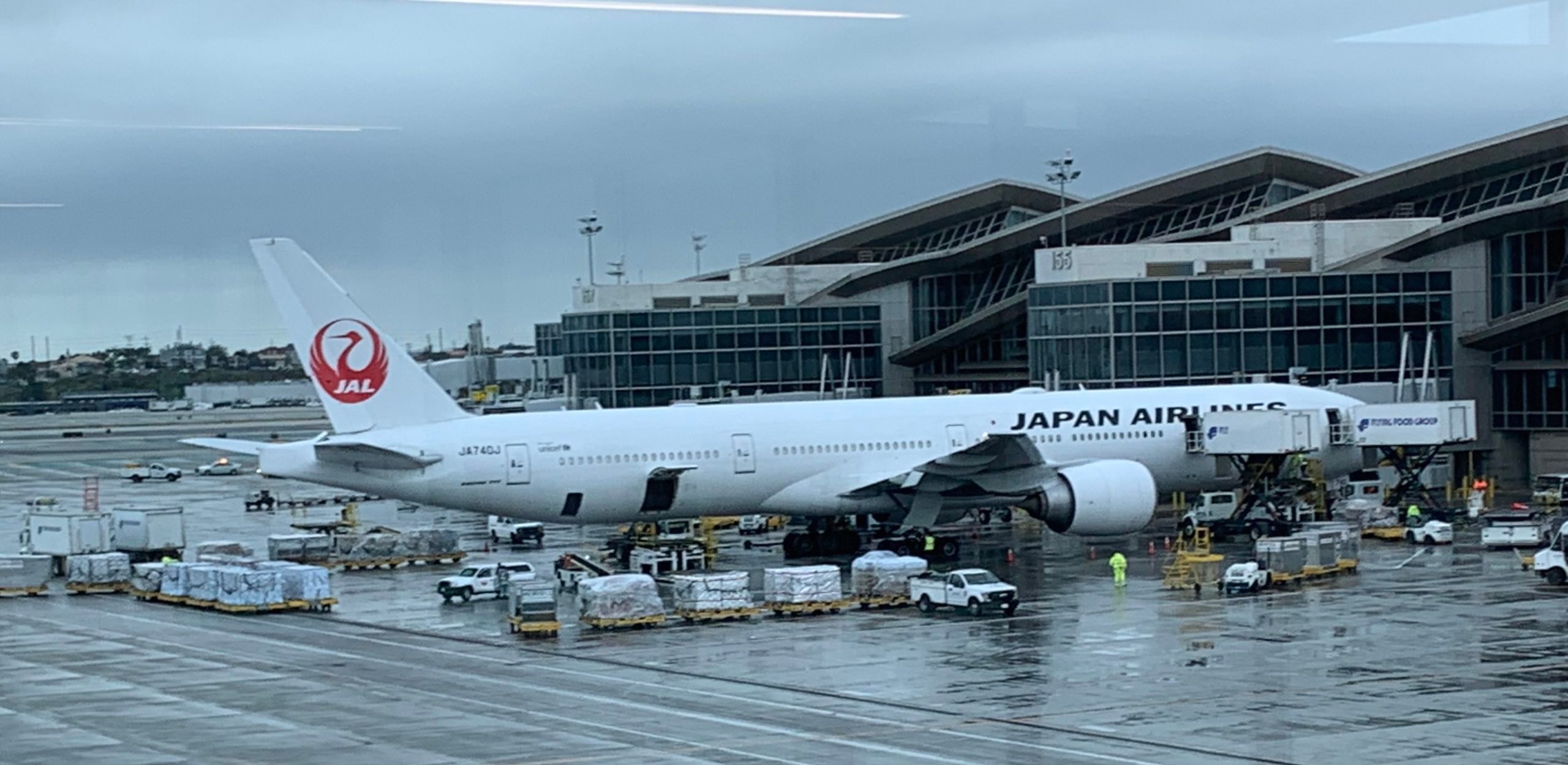
JAL at LAX
JetBlue -will receive nearly $936 million of US Federal government aid, with about $251 million in the form of a loan. Starting May 4, all customers must wear a face covering while traveling, including in flight, as well as during check-in, boarding and deplaning.
Kenya Airways – already precarious before the collapse, they have significantly slashed costs, with staff taking 80% pay cuts. Their government cannot afford to bail them out.
Korean Air – grounded 100 of its 146 aircraft and 70% of its South Korean based employees will take a six month leave of absence. They are considering selling their in-flight meal service, mileage program and maintenance operations for around $USD2.4 billion to make up a projected $US3 billion cash shortfall. It will get up to $US971 million support from state-owned banks.
La Compagnie -suspended operations until the US travel restrictions are lifted.
LATAM- reduced 95% of its flights through April and May, halved the salaries of its 40,000 employees ceased all new projects except digital efforts, deferred dividends payments and is seeking supplier payment extensions. They are asking for financial support from governments across the Latin American region believing that a normal travel market won’t be seen before 2022. They left the One World alliance yesterday.
LOT Polish Airlines- suspended all flight operations, from March 15. Organising special charter flights to various regions of the world to bring Polish citizens home. The owner of LOT Polish Airlines pulled out of a bid to purchase German carrier Condor.
Lufthansa – are negotiating with the Germany government for an aid package of nine billion euro. The Government wants two board seats in return and demanding a very high interest rate on its loan package. Lufthansa has already said it cannot survive without the aid, so it will be interesting to see what happens next. Bankruptcy is one option.
Malaysia Airlines – no bailout package has been forthcoming yet but the government is exploring (again) a possible merger between Air Asia, AirAsia X and MAS
Nok Air – gradually reduced operations but were still offering domestic flights in Thailand during April. Under new rules, only 70% of the capacity of the aircraft can be sold and face masks are compulsory. Crew will wear masks, gloves and face shields, and will not be serving food or drinks, although Nokair has only been providing water for some time now. Like the other eight Thai carriers, the company has applied for financial support.
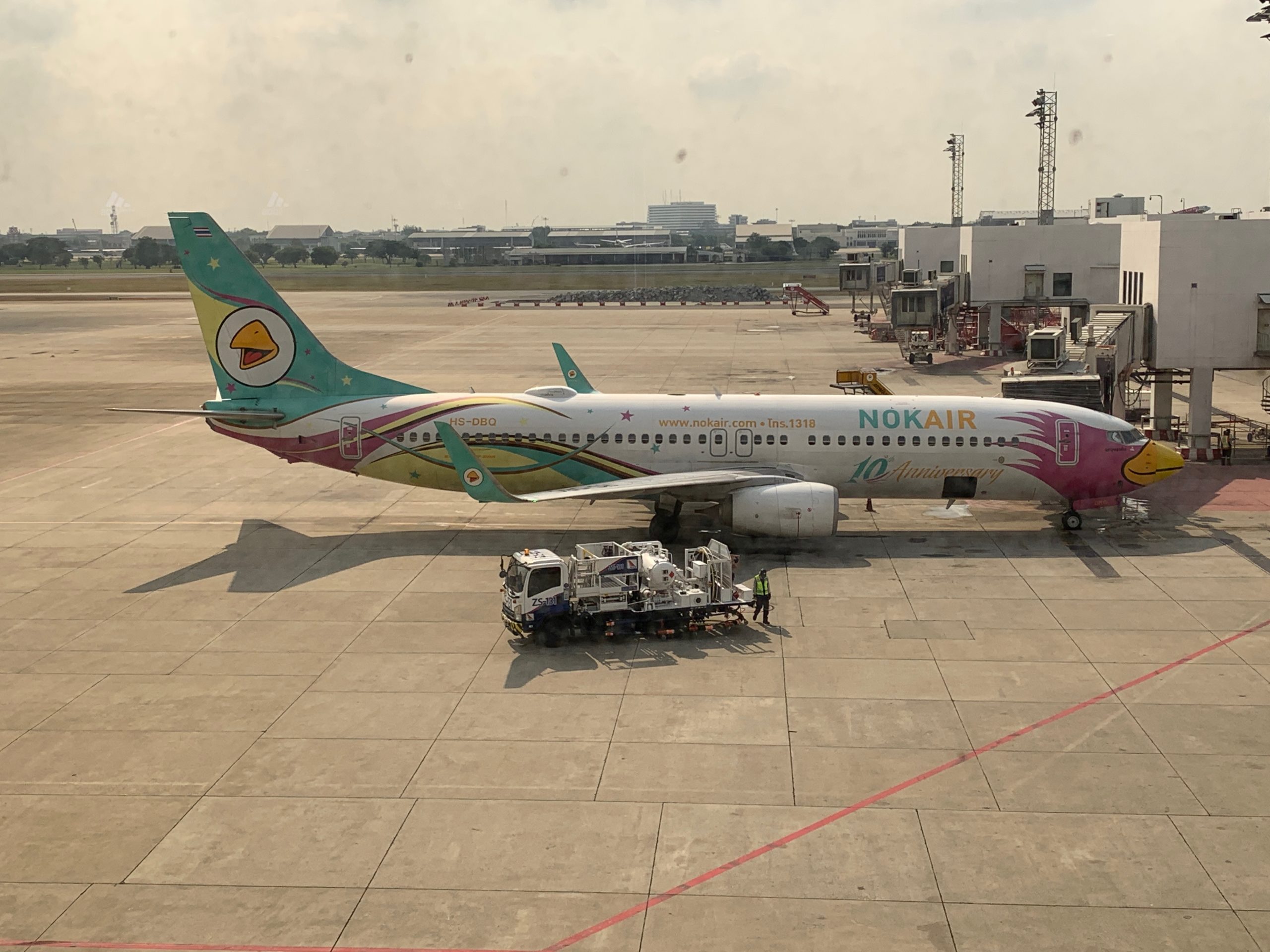
Norwegian Air – Received some Norwegian government assistance. For the rest of 2020, Norwegian’s will principally operate Norwegian flights with Norwegian government financial support. During 2021, the company intends to start flying internationally again but to fewer destinations and with a fleet that will be one-third smaller.
Oman Air -suspended all passenger flights on 26th March until further notice but is still flying some cargo services and some repatriation services. It then permanently terminated the contracts of hundreds of cabin crew with 26 days severance pay. Many of the staff found out they were terminated whilst overseas on work trips.
Philippines – total shutdown. The airline’s seeking government guarantees on debt, six-month emergency credit lines,long-term loans with low interest rates and a waiver on navigational and airport charges, which are currently being deferred
Porter Airlines – halted its flights due to COVID-19 and laid off its workers.
Qantas– International operations suspended completely, domestic capacity cut by 60%. 150 aircraft grounded, and two thirds of the carrier’s 30,000 employees stood down.
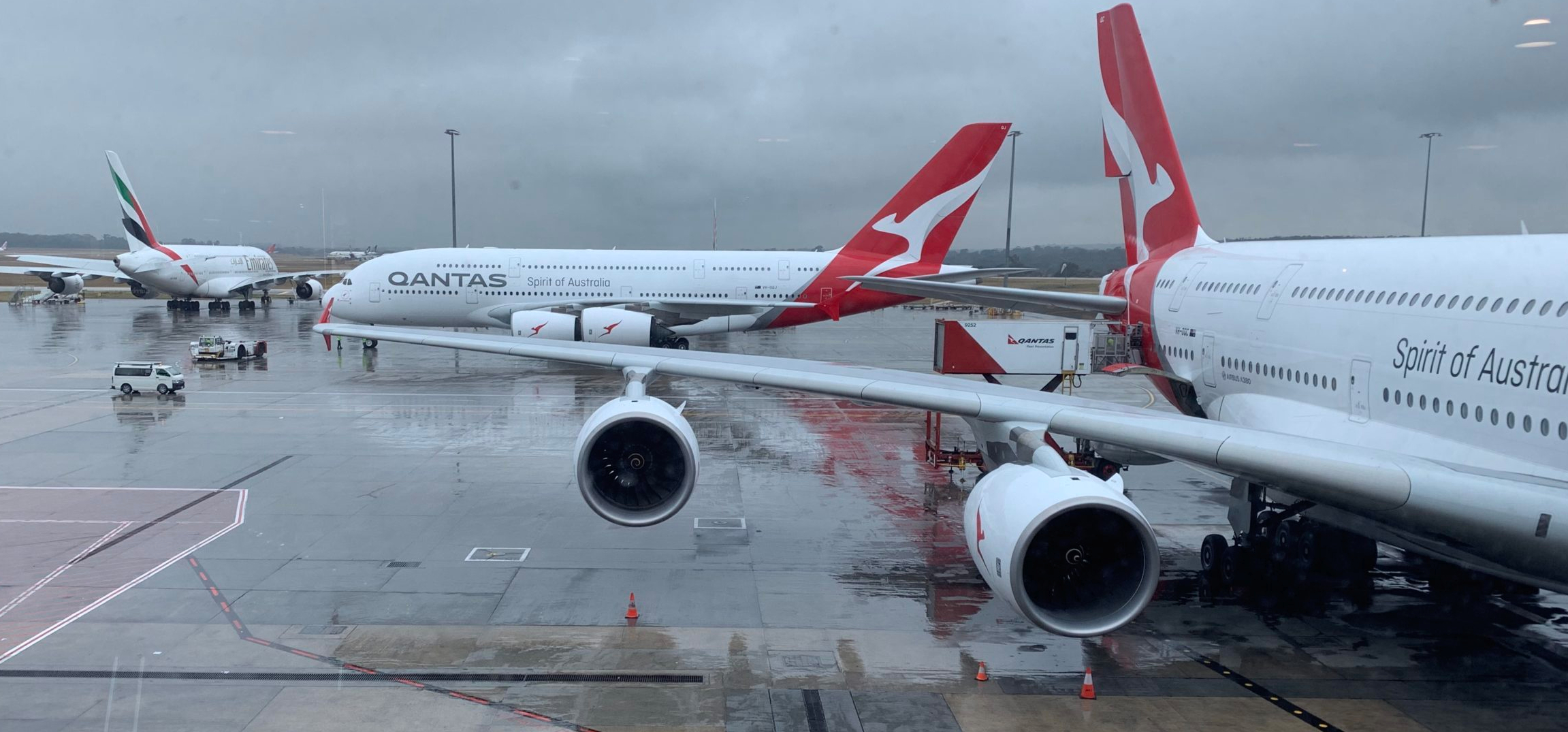
Qatar Airways – As you can transit Doha, Qatar has been marketing itself as the airline that will take you home. Non-citizen arrival into Doha is blocked. Mid level management are going through a “Solidarity Programme,” which is deferring 50% of salaries for three months, from April 2020 until future time. Qatar Airways is seeking government support
Royal Air Maroc – grounded third of their fleet and adopted austerity measures. The airline was due to join One World in April. I had planned my first flight with them in May. Not happening now.
Royal Jordanian Airlines -suspended all of flights from March 17 until the end of May except for repatriation services. Royal Jordanian will run out of cash at the end of June but is not planning to ask the government for cash, instead seeking tax breaks and payment deferrals.
Ryanair- is operating one percent of its scheduled flights to the end of June. CEO O’Leary has said it won’t fly if middle seats have to stay empty for social-distancing. Senior staff have taken a 50% cut , other staff are seeing a 20% cut, 3,000 jobs will go and a number of European bases will go. O’Leary has also has suggested to the EU competition commissioner that government support should be provided to European airlines in proportion to their share of the air traffic in each country, complaining that “Air France and Lufthansa are subsidy junkies hoovering up state aid”. Ryanair has said that it intends to challenge the government support packages in the European courts
S7 Airlines – continues to reduce Russian domestic services and do not expect that most of their international services will be fully resumed until April, 2021. S7 is currently operating 41 aircraft out of its fleet of 103 but do not expect to be using many more than this next year. They have asked for Russian Government aid including waiving of VAT for all domestic flights for nine years; tripling the state subsidies for regional flights, introducing a moratorium on increasing airport fees until the end of 2021 and providing compensation at the rate of two roubles (3 US cent) per-seat-km for cancelled services.
SAA South African Airways; once the best airline in Africa suspended its routes in March and will probably be liquidated today. The government has promised a new airline. Will it use SAA’s assets? Will it be bailed out regularly by the government?
SAS- put most of its operations on hold from Monday March 16. They are permanently cutting half of their workforce. They do not see “normal” flight operations before 2022. SAS has received a loan guarantee from the Swedish State guarantee of up to approximately €137 million to partly compensate the airline.
Singapore – halted most flights until 30 June and has grounded 138 of its 147 aircraft – including its 19 A380s (with a number at Australia’s Alice Springs airport (see video below). The airline has negotiated a $US10 billion package backed by SIA’s largest shareholder Singapore government’s Temasek Holdings a government-owned investment company,
Check the number of planes parked at Alice Springs airport! The town has a population of 25,000 so there must be enough seats on those planes for every resident to get a seat out.
Southwest – expects to receive US government help of $US3.2 billion, of which $US1 billion is likely to be a low-interest loan. The rescue package is expected to include warrants that would allow the Treasury to buy stock in the company.
SpiceJet- won’t pay its pilots salaries for April and May. Pilots flying cargo flights will be paid per ‘block hours flown’.. It has cut salaries for its senior and middle-management by up to 30%.The airline hopes to be flying full services by the end of May.
Spirit Airlines -will receive US$330 million in Federal aid to cover payroll for almost 9,000 employees. They have reduced seating capacity by 75% in May and applied to cease service to 26 cities, a request that was denied by the US Department of Transportation. They are seeking additional financing, have suspended almost $US75million of planned capital spending and looking to reduce non fuel operating costs by up to $US30million.

Spirit jets at DFW airport in March 2020
Sri Lankan-Most of the fleet is grounded but it is operating rescue flights and carrying cargo. It is 95% owned by the government which has approved a rescue package and credit lines from state owned banks.
SWISS International Air Lines will delay deliveries of new short haul aircraft and phase-out older aircraft. Switzerland has guaranteed $US1.31 billion in state-backed loans to SWISS and Edelweiss.
TAP Air Portugal is being seen as a strategic company by the Portuguese government and won’t be allowed to fail with government guarantees for bank loans, deferral of tax payments or nationalisation proposed.
Thai Airways- has grounded 69 of its 82 jets, and suspended all international and Thai domestic flights, probably until September. They are seeking $US1.80 billion emergency loan. The Finance Ministry is providing the loan guarantee, along with a rehabilitation plan and “professionals” to manage the airline as there have been calls to completely overhaul the carrier. This will include an overdue reduction in the number of aircraft and the number of models they operate. A position way overdue as the airline has an unwieldy collection io aircraft. More than 200 furloughed staff have formed a car and motorbike delivery service in Bangkok called “Delivery by Pilot and Crew“.

Tiger Airways – ceased all operations
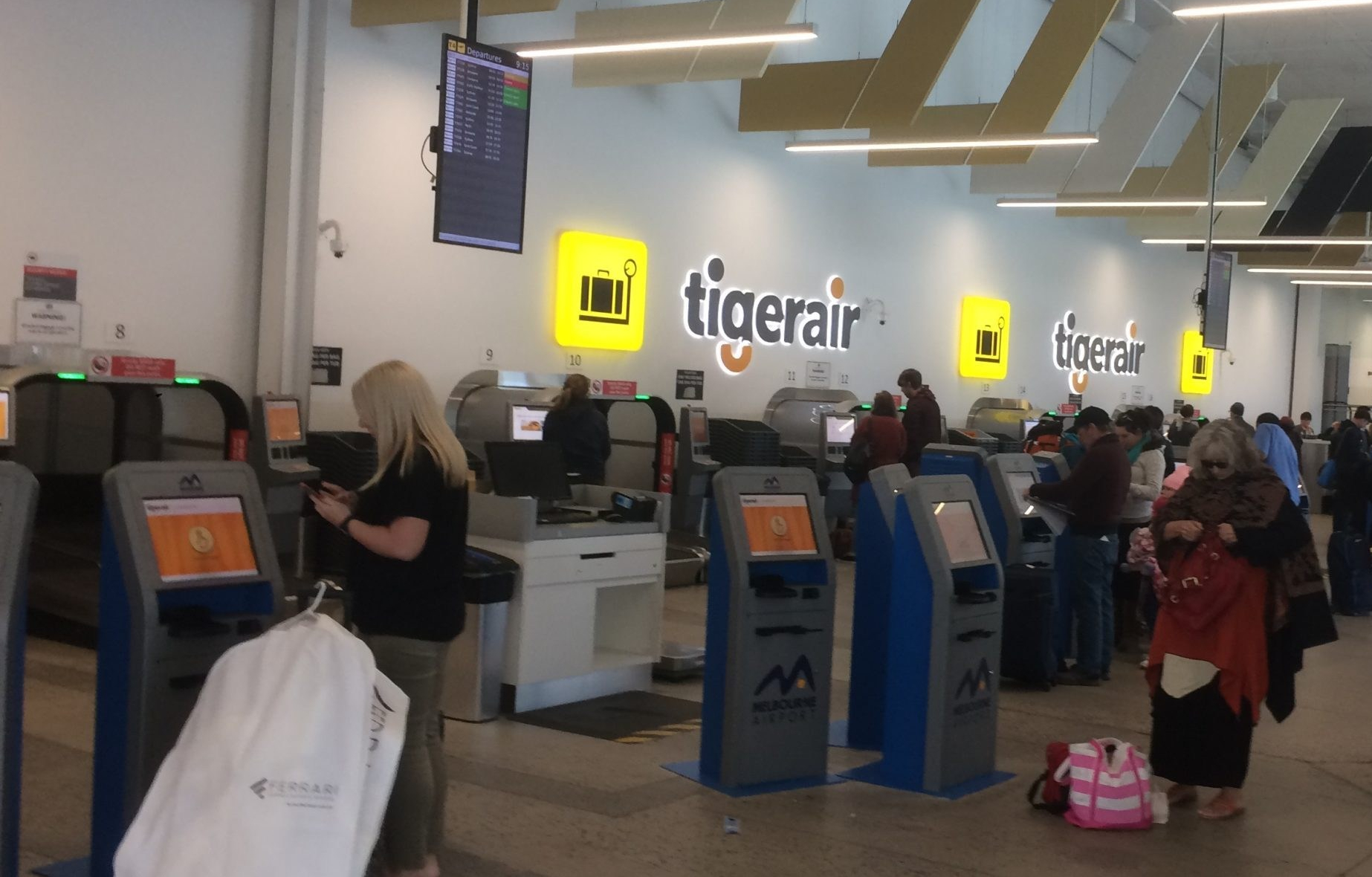
TUI -suspended majority of flight operations until further notice and advises investors that it will apply for state aid until this crisis is over
Turkish Airlines -will not operate any commercial flights until May 28th although it is operating repatriation services. They implemented a 55% pay cut for senior and 30% for junior staff in April and dismissed some employees
United Airlines -warned its employees that major staffing cuts may be on the horizon following a 97% fall in passengers. United expects to get about $US5 billion in federal-government aid, of which about $US3.5 billion will be a direct grant and about $US1.5 billion will be a low-interest-rate loan.The Company also expects to issue warrants to allow US Federal government to purchase about 4.6 million shares of common stock
Vietnam Air -restored key domestic routes to 30% of normal capacity but overseas flights remain grounded after most of its 100-strong fleet grounded was grunded from February .Airline crews now wear personal protective equipment, and passengers wear masks inflight. On the ground, passengers must maintain social distancing. The company has also sold its 49% share of Cambodia Angkor Air and is selling five planes to raise cash following an estimated $US700million cash shortfall for the company.
Virgin Atlantic – Just six planes are now flying on three routes only. Richard Branson’s loan request from the British government was declined and its 49% shareholder Delta Air Lines isn’t able to help. Administration is looming.
Virgin Australia –is flying a skeleton domestic route network with government support. The company is in voluntary administration with administrators looking for new investors and for bond holders to write off $A1.8biliion dollars in debt
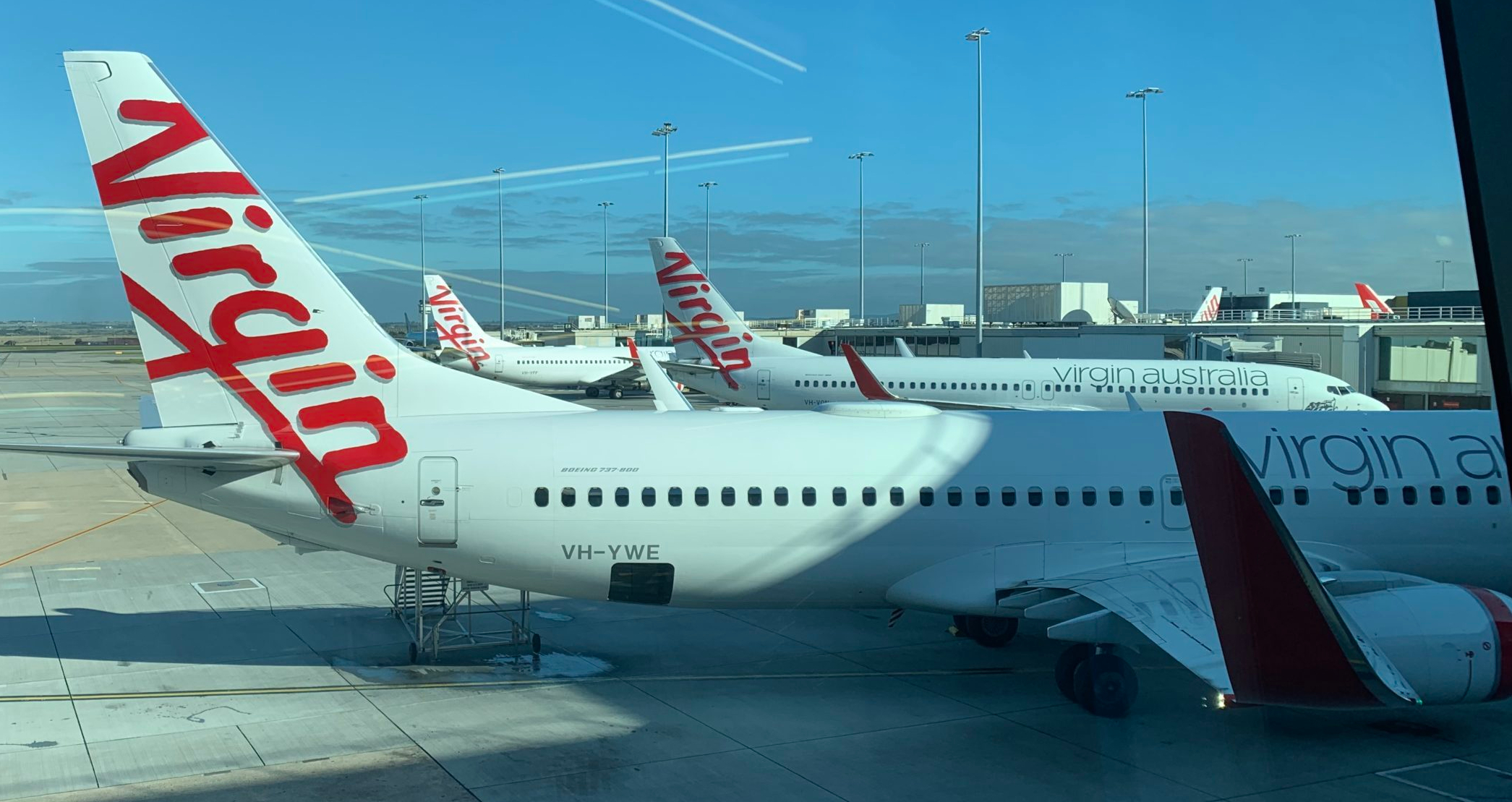
Line up of Virgin Australia planes MEL airport, 2019
Volaris- Cut capacity by 80% in April. Flights in May are reduced by 90% compared to a year ago. 63 of their 82 A320s are in long-term storage and new aircraft are being deferred. At least 80% of their staff are on long term leave. They are involved in legal action over their refusal to refund travelers or let them rebook their flights without penalty. Their cash position is strong.
Vueling – has signed a syndicated financing agreement for a five year €260m with a group of banks conditional on Spanish government support. The agreement prevents other IAG companies (for example British Airways or Aer Lingus from drawing on any of the funds.
WestJet –cut workforce by half and grounded thousands of domestic flights and all of their international flights.
Wizz Air- came into COVID19 with strong liquidity. 97% of flights were cancelled, planes grounded, 30 planes returned to lessors, 19% of workforce reduced, executive and senior officer pay cut by 22 percent and salaries of pilots, cabin crew and office staff by 14 percent and other staff placed on leave.
Service suspension is across most markets until June but UK and Austria flights are flying. They have started some services from Budapest base, expect a full return to service in July and a full recovery in a year.
All passengers must wear a face mask and cabin crew will wear masks and gloves throughout the entire flight. The airline is trying to eliminate any use of check in desks at airports. This is their new enhanced health video:
The reality is that I think air travel will never look the same again. Many companies are discovering that most face to face meetings are un necessary and can be replaced with Facetime, Zoom or a messenger chat. The world’s middle class won’t recover economically for a long time putting paid to travel. Individuals will be warier about venturing out of their own country for fear being trapped and unable to easily get home. All of this suggests that we will have fewer airlines offering fewer flights to fewer places. Welcome to a new paradigm.
Virus Information
Related Posts
- CoronaVirus- Health Info Country by Country
- Should you travel? No.
- Can you travel? No. Implications and Advice
- Dodging National Closures – Last Plane to Bangkok
- Qatar Airways getting people home
- American Airlines Feel Good Video: You Are Why We fly


Leave a Reply